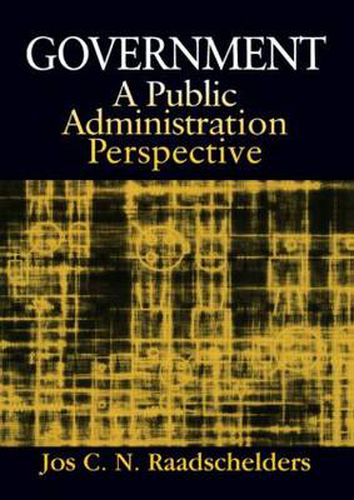Readings Newsletter
Become a Readings Member to make your shopping experience even easier.
Sign in or sign up for free!
You’re not far away from qualifying for FREE standard shipping within Australia
You’ve qualified for FREE standard shipping within Australia
The cart is loading…






Most public administration texts overly compartmentalize the subject and don’t interconnect the various specializations within government, which leaves a serious gap in preparing students for public service. Government: A Public Adminstration Perspective is designed to fill that void. It provides a comprehensive, multidisciplinary view of government that includes perspectives from political science, political theory, international relations, organizational sociology, economics, and history. The text draws on classic and modern literature from all these areas to analyze government at four different levels - ideational, societal, organizational, and individual layers. It links public administration’s various subfields - human resource management, budgeting, policy making, organizational theory, etc. - into a holistic framework for the study of government. It also includes an extensive bibliography drawing from American and European literature in support of the book’s global, historical, and comparative approach.
$9.00 standard shipping within Australia
FREE standard shipping within Australia for orders over $100.00
Express & International shipping calculated at checkout
Most public administration texts overly compartmentalize the subject and don’t interconnect the various specializations within government, which leaves a serious gap in preparing students for public service. Government: A Public Adminstration Perspective is designed to fill that void. It provides a comprehensive, multidisciplinary view of government that includes perspectives from political science, political theory, international relations, organizational sociology, economics, and history. The text draws on classic and modern literature from all these areas to analyze government at four different levels - ideational, societal, organizational, and individual layers. It links public administration’s various subfields - human resource management, budgeting, policy making, organizational theory, etc. - into a holistic framework for the study of government. It also includes an extensive bibliography drawing from American and European literature in support of the book’s global, historical, and comparative approach.